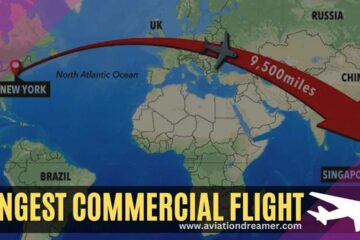Reliable Aircraft Connectivity for Passengers – Aviation News
We all know how frustrating the area with bad 3G / 4G coverage is. When you can not be sure that you can communicate with the email, listen to your favorite podcast or go to your new favorite program on NetFlix. We want to stay connected to any place even above 10,000 meters above the Atlantic Ocean. Therefore, users expect stable and reliable aircraft connectivity, which transmits connectivity from the connectivity to the terrestrial connectivity smoothly after connecting the technology. Such hopes were impossible only 10 years ago, but now it is common.
The reliability of on-demand aircraft connectivity is a major challenge when the aircraft cannot return to ground coverage and depends solely on satellite coverage. Satellite communication faces several physical obstacles: the result of the physical distance in the attenuation and the delay, the signal is sensitive to rain and other meteorological sources, the available bandwidth must be shared between several terminals. And it takes time to change traffic from one beam to another.
Such challenges should be partially removed by innovating satellite systems, which are already being handled by industry leaders as a result of customer requirements/expectations and satellite market creation is increasingly increasing competition among adaptive satellite applications.
In order to achieve the goal of another innovative Satom for better customer experience, applications will need to adapt to some challenging situations. To ensure that a lot of application developer has to be done so that your applications are strong and flexible to harm the satellite system Developers need to consider the satellite link design and complex features of architecture in their application. In order to optimize the stability, they should also check and verify their application under various conditions, from which the required passenger experience can be obtained. SATCOM Applications
Reliable Aircraft Connectivity for Passengers
For testing and validation in various situations, especially in the case of air services, using the device to test by air is ideal. Also, it is expensive and it takes a lot of time to fly around the world in order to operate an application under the multitude of geographical conditions, airspace, and climate. It is not mentioned that reproducing certain test scenarios is practically impossible. For example, the crowd can be played around the busy airport, but this will be allowed?
To consolidate this, travelers should improve on two main areas of improvement if passengers are promised a reliable application related to the software. Satellite systems should offer new innovative solutions to increase efficiency and overcome some technical limitations. Second, the applications must be rigid and more flexible for the nature of a communication satellite. The latter can be implemented through off-air testing to achieve the highest maturity.
Access to connectivity and digital dependence on consumers is far from current appreciation. It is expected that the borders are not accepted, because the user does not know every day or related to the technical challenges related to the connectivity of the aircraft. The experience of the passengers has diminished, how the performance of the connection is up to the expected quality and is dependent on today’s connectivity in this world, it can become an intrinsic advantage in the fiercely competitive aviation industry.




0 Comments